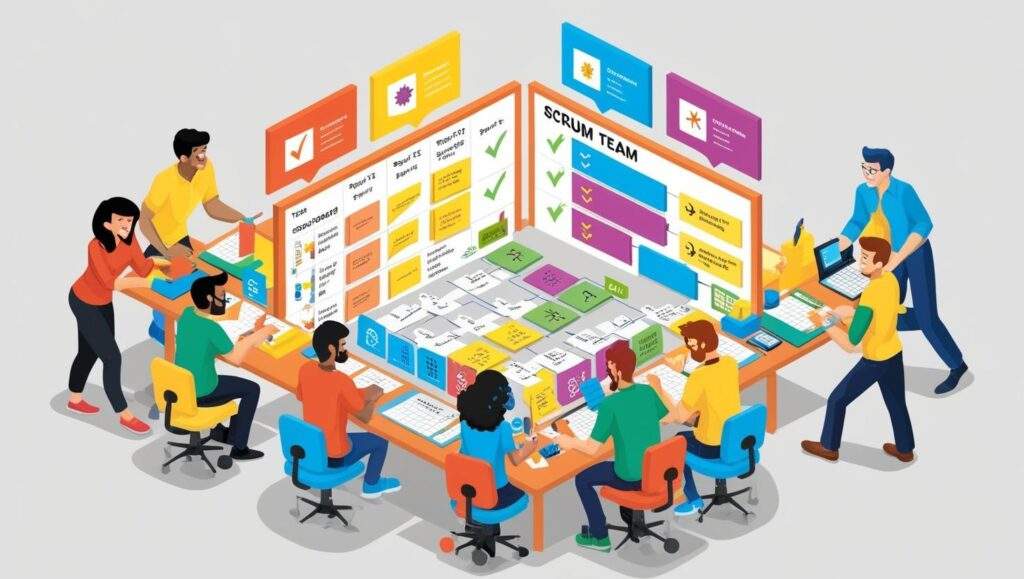
Introduction
Agile methodologies have become the gold standard in modern software development, emphasizing iterative progress, collaboration, and fast feedback loops. But where does QA fit into the mix? As part of our “Tester to Lead” series, this subtopic dives into how QA testers thrive in Agile setups—whether that’s Scrum, Kanban, or another variation. We’ll look at the core values of Agile, the QA role in sprints, and how continuous testing keeps quality high without slowing down delivery. If you’re new to Agile or simply want to sharpen your approach, this post is for you.
1. Agile 101: Key Principles
At its heart, Agile values individuals and interactions, working software, customer collaboration, and responding to change. Traditional waterfall approaches rely on fixed requirements and sequential stages, but Agile teams move in short cycles (sprints) to deliver incremental value. For QA:
- Continuous Collaboration: Regular touchpoints with developers, product owners, and sometimes even customers.
- Early Feedback: Testing starts as soon as new code is integrated, ensuring fewer end-of-cycle surprises.
- Adaptive Planning: Requirements can shift from one sprint to the next, so QA must stay flexible.
These principles help QA testers catch issues quicker, refine features based on real-time feedback, and ensure the product remains user-focused at all times.
2. QA’s Role in Scrum Ceremonies
2.1 Sprint Planning
During Sprint Planning, QA testers help estimate the testing effort, identifying potential risks or complex areas. This prevents underestimation of tasks and helps the team plan realistic sprint goals.
2.2 Daily Stand-ups
A daily stand-up is a quick meeting to share progress and blockers. For QA, it’s a chance to highlight defects, coordinate testing priorities, and find out when new features will be “dev complete” and ready for testing.
2.3 Sprint Reviews
Once a sprint ends, teams often hold a Sprint Review to demo the increment (the working features). QA feedback is crucial here—if certain stories aren’t meeting acceptance criteria, you’ll discuss it openly and decide next steps.
2.4 Retrospectives
Retros are about continuous improvement. From a QA perspective, it’s an opportunity to voice challenges (e.g., not enough test environment stability) and suggest solutions (e.g., adopting a new automation tool or adjusting sprint lengths).
3. Fast Feedback Through Continuous Testing
One of Agile’s biggest advantages is continuous feedback, enabled by continuous testing. Instead of waiting for a “testing phase” at the end, QA integrates into each step:
- Frequent Builds & Deployments: Tools like Jenkins, GitLab CI, or GitHub Actions automatically run tests when new code is pushed.
- Automation Suites: Smoke and regression tests run in minutes or hours instead of days, allowing teams to spot breakages swiftly.
- Exploratory Testing: QA testers often do rapid, unscripted tests as features get built, catching edge cases early.
This approach reduces the risk of discovering major issues late in the process, aligning with Agile’s commitment to responding to change over rigidly sticking to a plan.
4. QA Best Practices for Agile Teams
- Involve QA Early
- The earlier QA is involved in user story refinement or feature discussions, the clearer the acceptance criteria. This reduces rework.
- Pair Testing
- Pair up testers and developers to collaborate on test cases or debug issues. This shortens feedback loops and fosters mutual understanding.
- Automation Where It Counts
- Not every test should be automated, but consider automating repetitive regression tests. This frees testers to focus on critical and exploratory testing.
- Keep Test Cases Lean
- Agile is about flexibility. Avoid over-documentation. Create simple, direct test scenarios that can be quickly updated when the backlog or features change.
- Track Quality Metrics
- Velocity isn’t the only metric in Agile. Keep an eye on defect density, escape rate, or customer satisfaction to measure real quality improvements.
Conclusion
Agile isn’t just a methodology; it’s a mindset that places quality and collaboration at the center of software development. As a QA professional, embracing Agile principles empowers you to deliver fast, continuous feedback, prevent last-minute surprises, and ultimately ensure the product evolves in the direction users need.
You may have missed the first entry in the series, Click here to read : Why QA Is the Ultimate Career Foundation: Building Skills Beyond Testing.
Next, we’ll tackle mastering core QA skills—stay tuned!


Comments are closed.